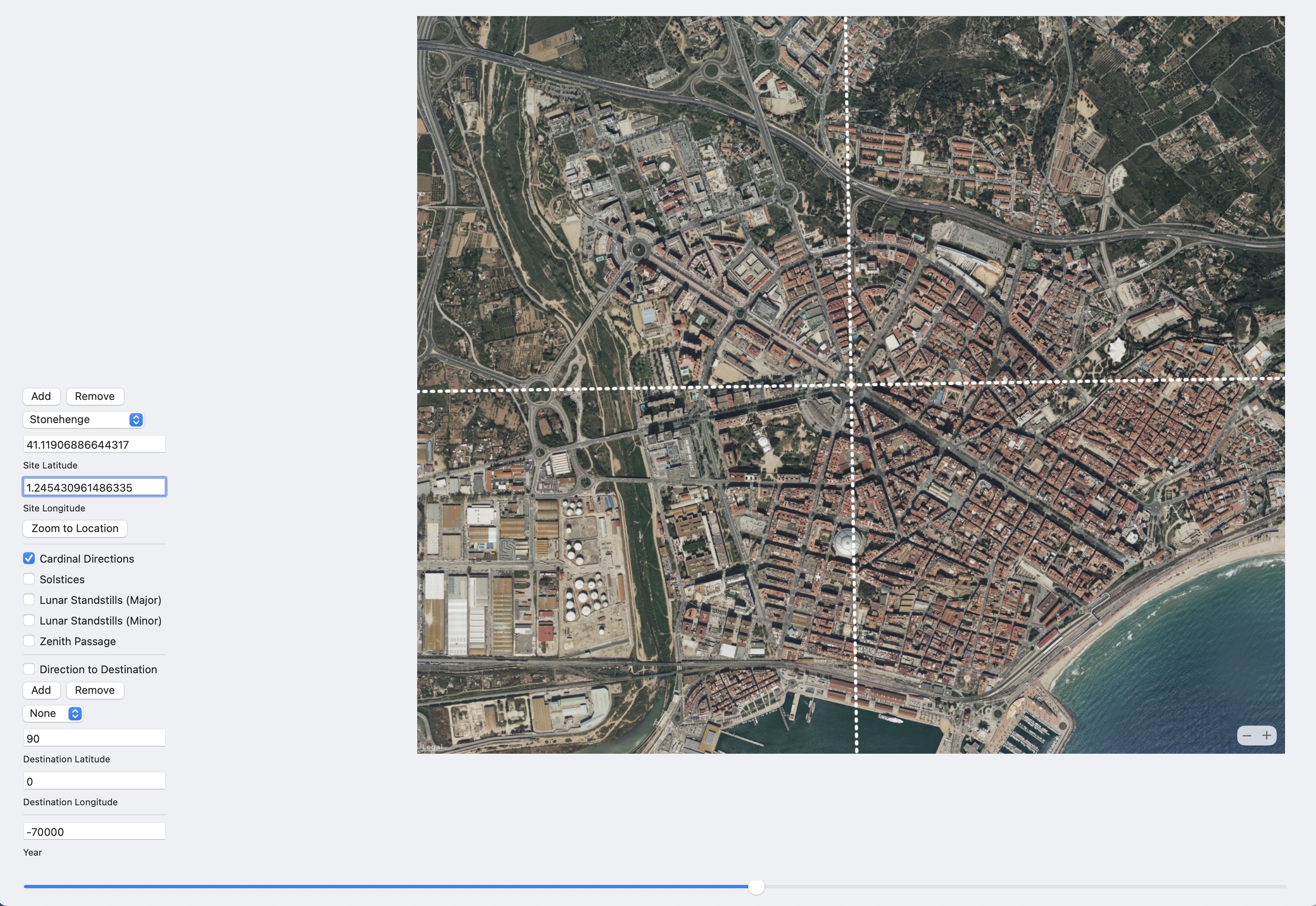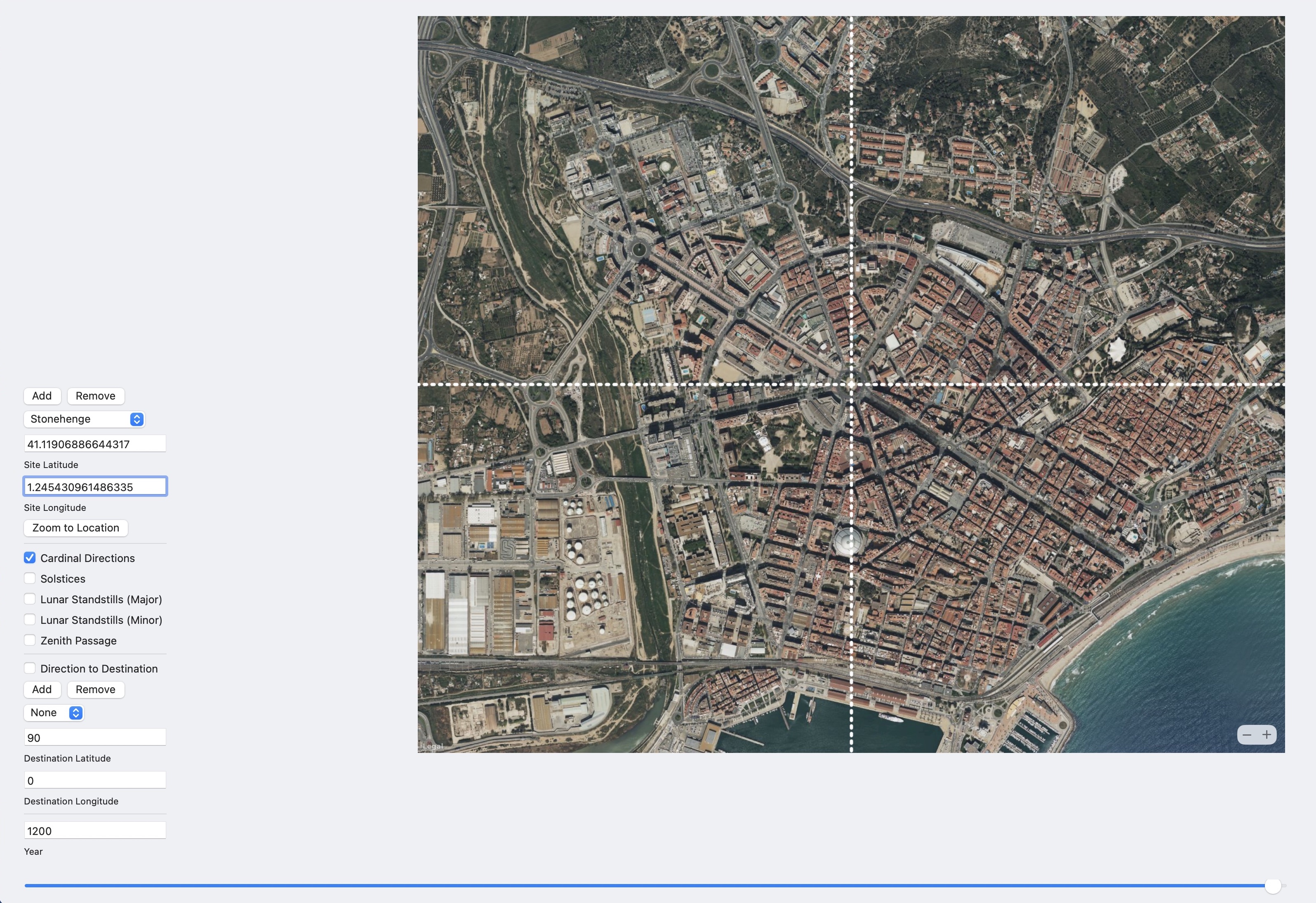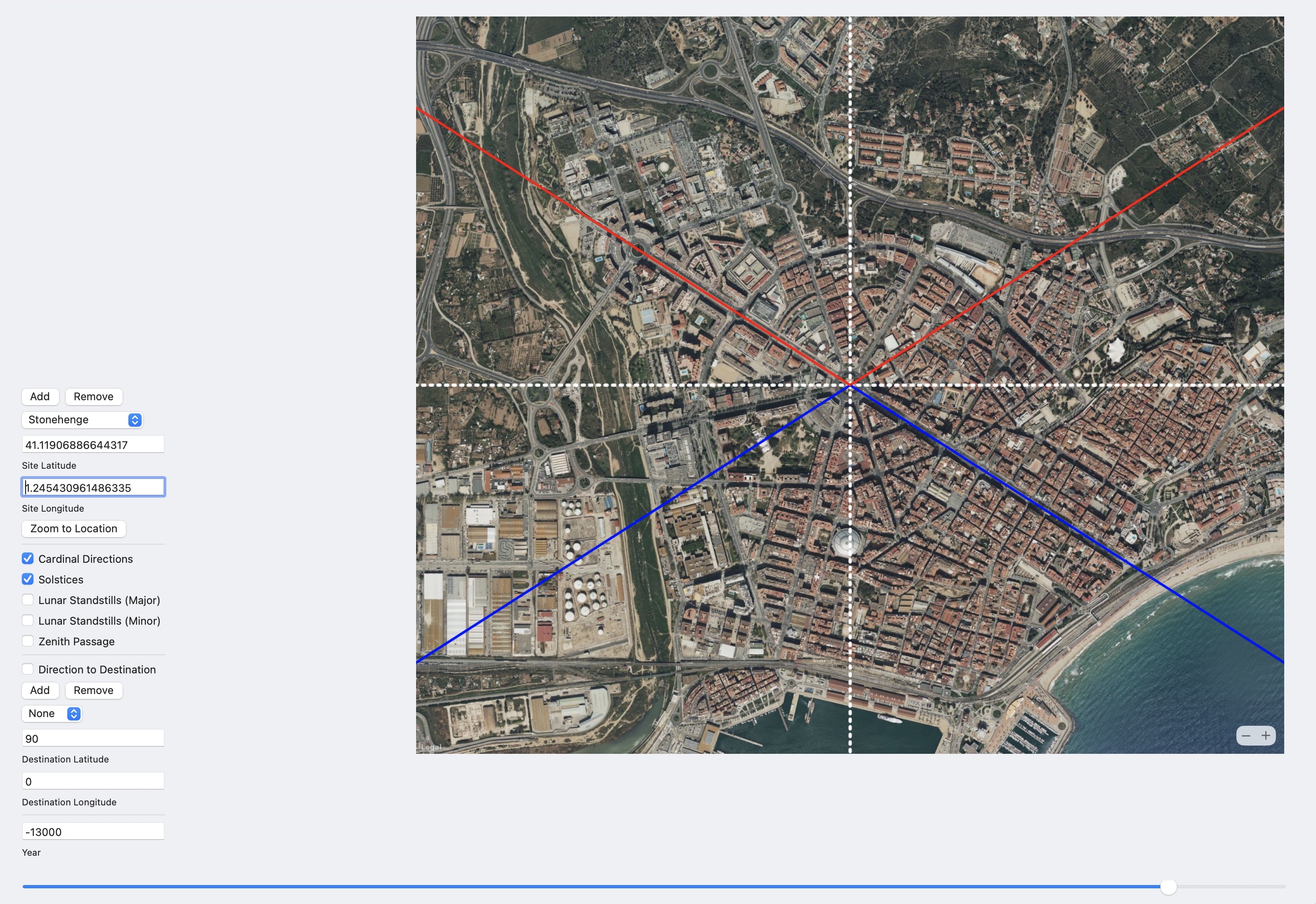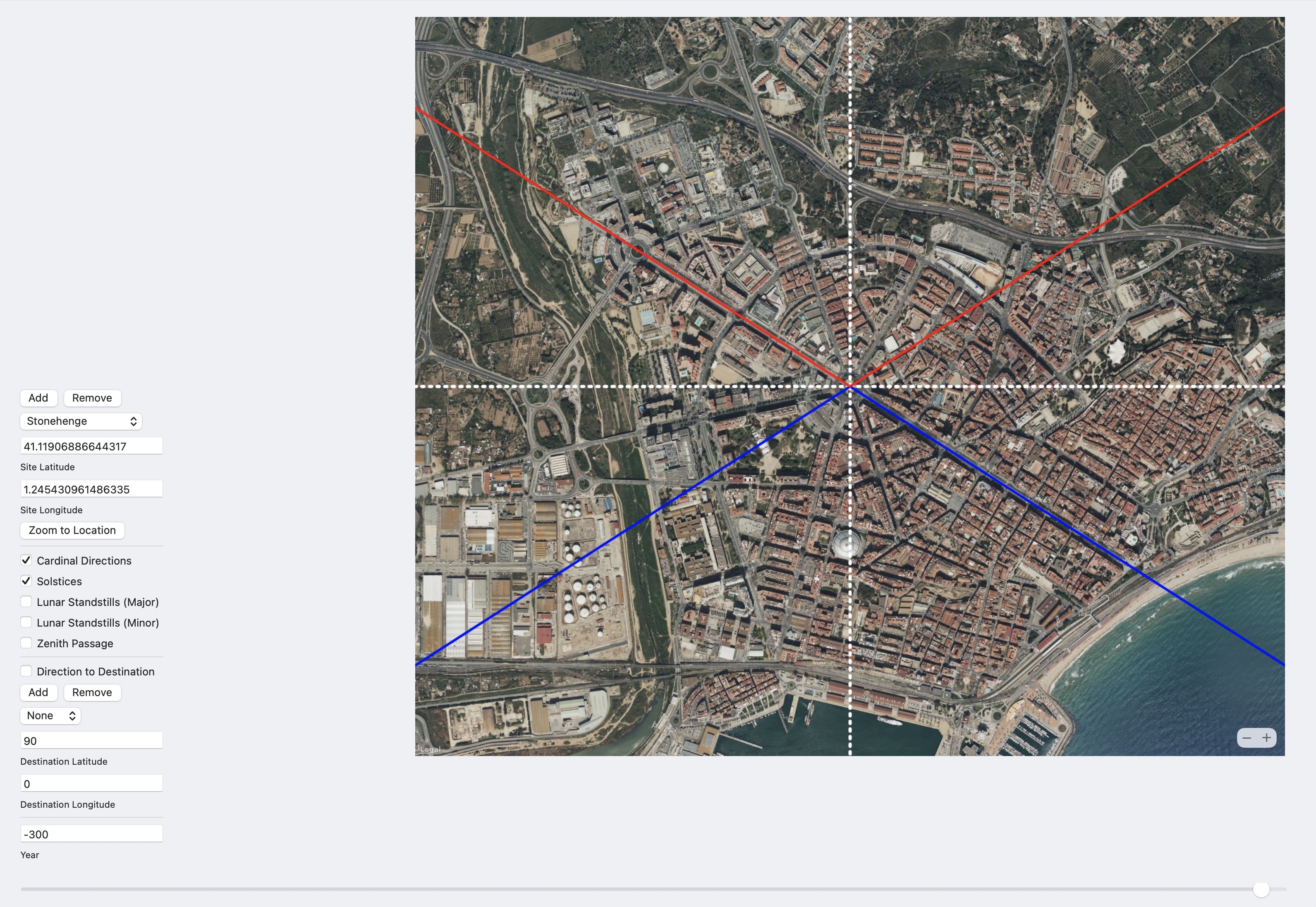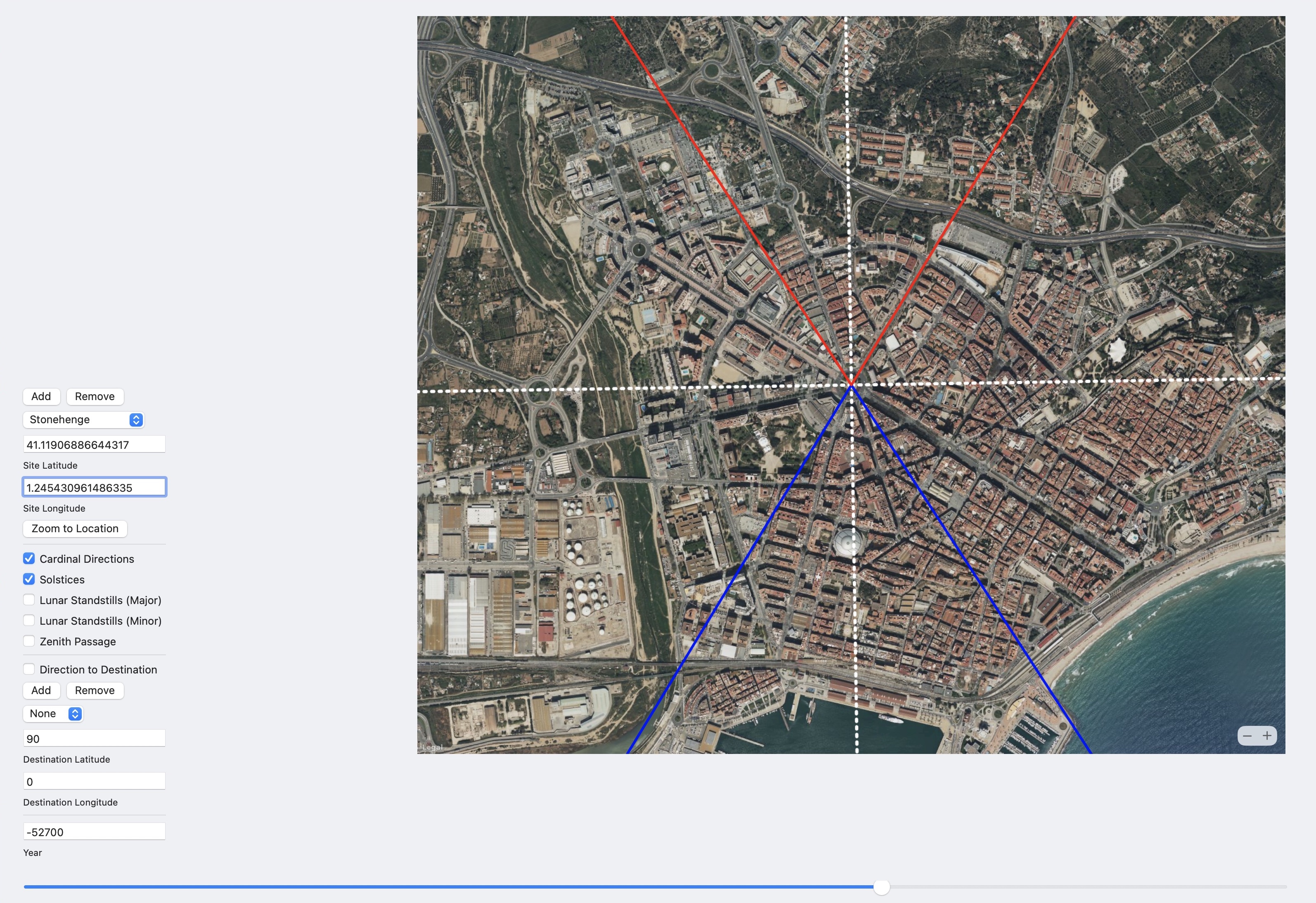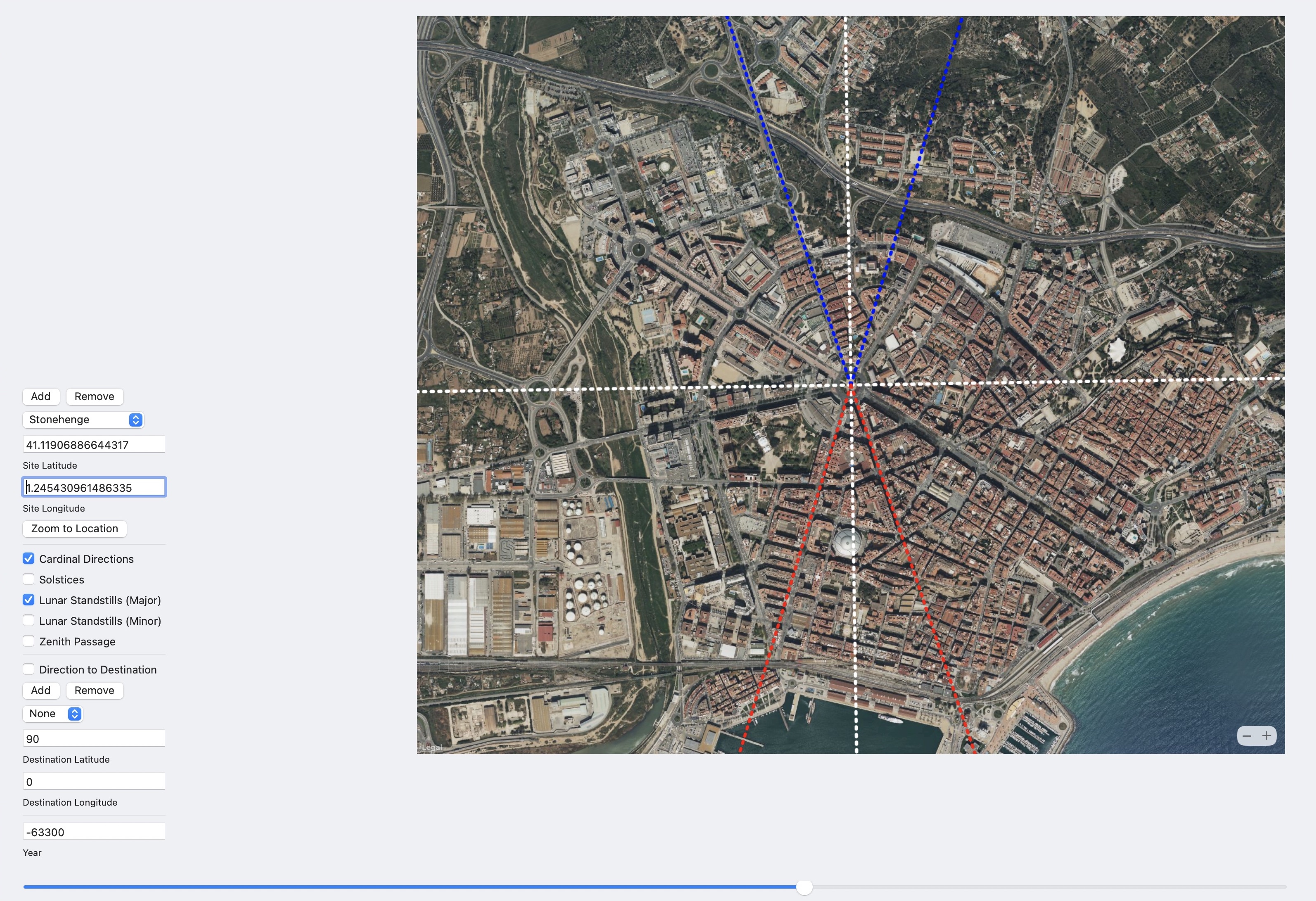Richard Cassaro first brought the amazing cyclopean walls in Spain to my attention several years ago. Many sites in the Mediterranean are either cardinally aligned N-S-E-W or in directions of solstices and lunar standstills. But almost as many are in directions that are not explainable in conventional terms. As I was expanding my search for other sites that supported the Before Atlantis hypothesis, I discovered numerous sites that appeared to reference previous pole locations.
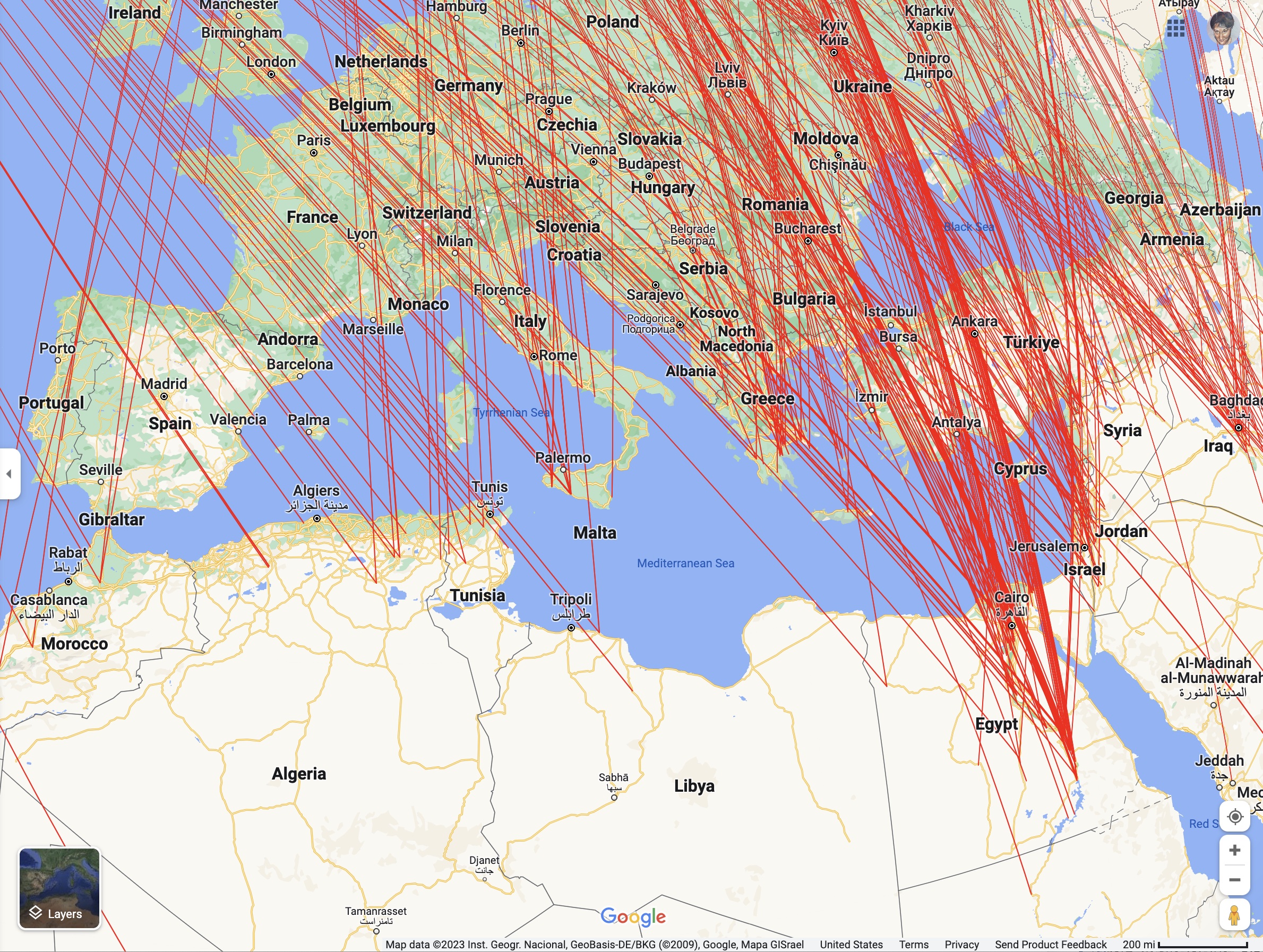
A recent video by Hugh Newman had a very interesting shot from out of one of the gates leading into the old walls of Tarragona, a city on the east coast of Spain. It showed a compass reading that was a few degrees west of due north.

The largest structures on earth tend to be the most precisely aligned. For example, the Giza pyramids, as well as the oldest (and deepest) foundations at Teotihuacan, Chichen Itza, Baalbek, and Machu Picchu, were all precisely aligned to the cardinal direction at the time of construction, according to the Before Atlantis hypothesis. The Giza pyramids being the most recent were aligned to the current pole, Teotihuacan to the previous pole estimated to have been located in Hudson Bay 20,000 to 50,000 years ago, Chichen Itza to the Norwegian Sea pole 50,000 to 75,000 years ago, Baalbek to the Greenland pole 75,000 to 130,000 years ago, and Machu Picchu to the Bering Sea pole, at least 130,000 years ago.
So why would Tarragona be a few degrees off from due north? It turns out that if the North Pole were in the Norwegian Sea, the pole would be several degrees west of its current location and the view from that gate at Tarragona would have faced exactly due north. Coincidence?
The main thoroughfare, Rambla Nova, is oriented in a direction that is closely aligned to the winter solstice sunrise and summer solstice sunset. The alignment would have been exact around 300 BCE. Changes in the earth’s axial tilt causes the direction of the solstices to change over a 41,000-year cycle. Based on the timing of the cycle another exact alignment also existed in 13,000 BCE.
Three other streets emanate like the spokes of a wheel radially from Font del Centenari at the center of the city. All three appear to be oriented in solar and lunar directions relative to the Norwegian Sea pole – C. de Pete Martell and Av. de Prat de la Riba to major lunar standstills circa 63,000 BCE and Av. Marques de Montoliu to the summer solstice sunrise and winter solstice sunset 52,700 BCE.
Is it possible that the oldest foundations at Tarragona were built when the North Pole was only 2,000 miles away in the Norwegian Sea? At that distance, Tarragona would have been in the northern temperate zone at roughly the latitude as Anchorage, Alaska. It is interesting that there do not appear to be similar constructions in northern Europe, only in the Mediterranean region. Why?
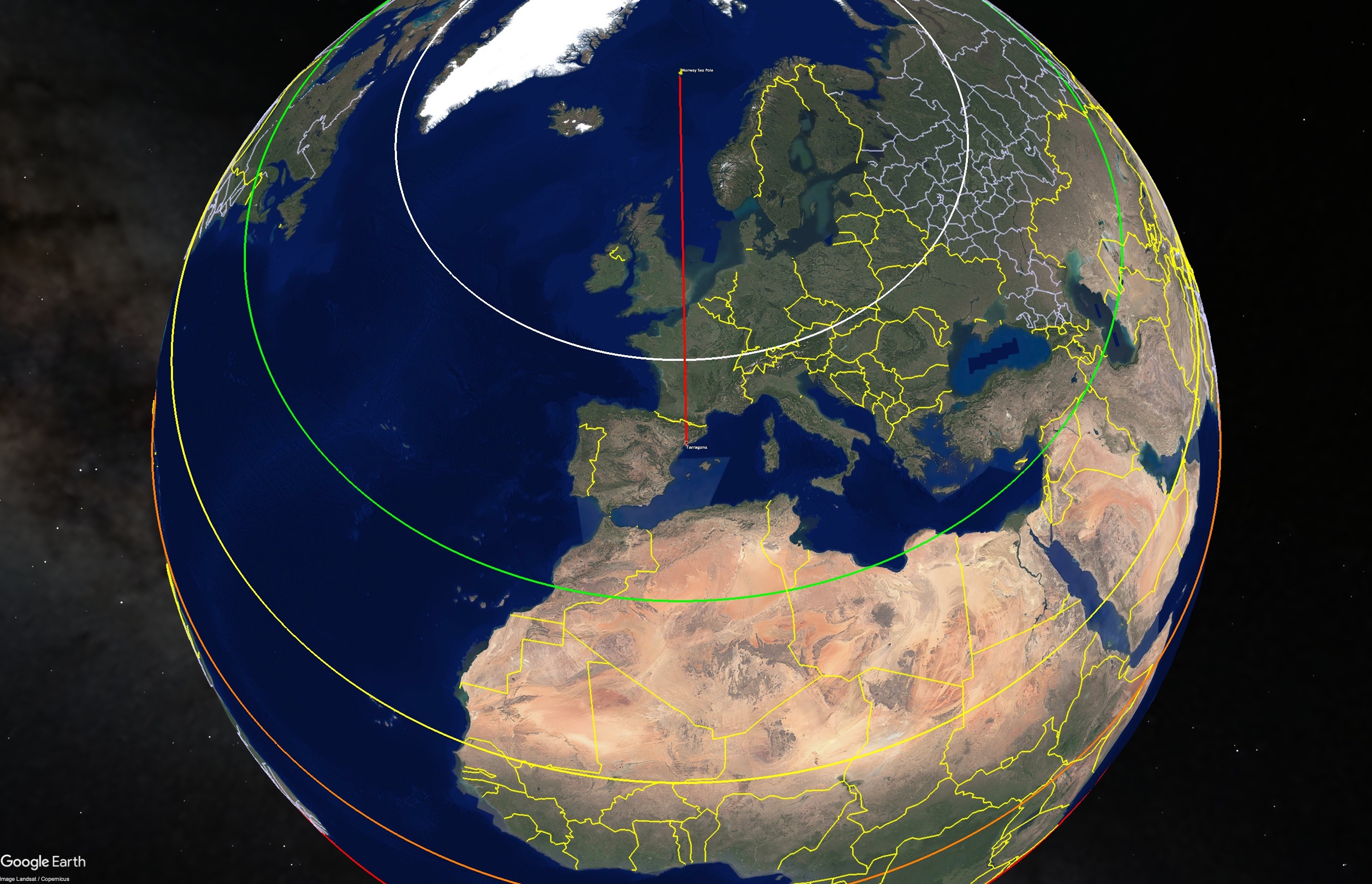
Hapgood’s pole shift hypothesis provides a plausible explanation. At the northern extreme of the temperate zone, places further north would be in the polar zone and not suitable for human habitation. That the earth’s poles have shifted several times over the past 100,000 years provides not only a simple and compelling explanation for ice ages and glacial cycles but also explains the alignment of hundreds of archaeological sites across the world that otherwise have no conventional explanation. Although it has and continues to be dismissed by the geological community, that so much climate and archaeological evidence appears to support his hypothesis makes it hard to ignore.
Feature image at the top of the article courtesy Tomàs./Flickr/Creative Commons



